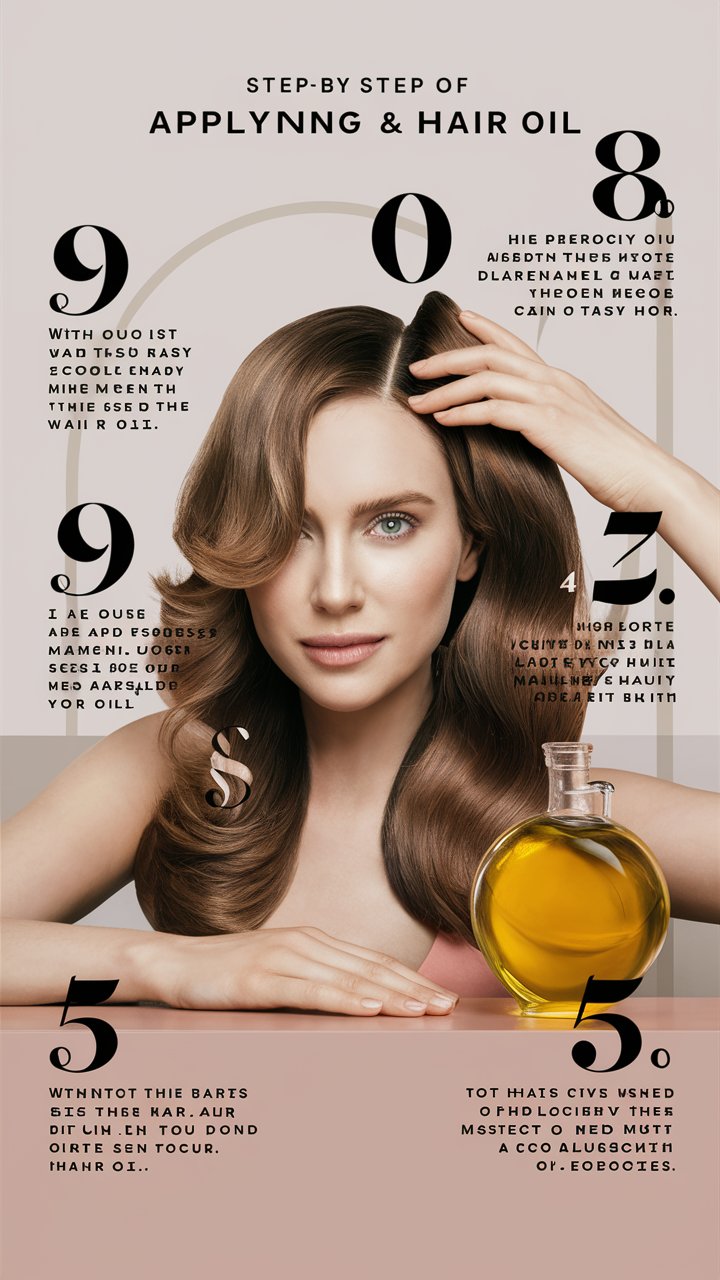Hair oil isn’t just another beauty trend—it’s one of the oldest and most trusted ways to keep hair strong, shiny, and healthy. Across cultures and generations, women (and men) have used hair oiling as a ritual for nourishment, growth, and protection. The benefits go beyond shine: hair oil can hydrate, repair damage, reduce frizz, protect against breakage, and even soothe the scalp.
But here’s the truth: the way you apply hair oil matters just as much as the oil you choose. Apply it wrong, and you risk greasy, weighed-down strands or even scalp irritation. Apply it right, and your hair transforms—soft, silky, and more resilient than ever.
This guide will walk you through how to choose the best oil for your hair type, the correct application techniques, common mistakes to avoid, and professional tips for maximum results.
1. Choosing the Right Hair Oil for Your Hair Type
Every hair type reacts differently to oils. The secret to getting salon-level results lies in matching the oil to your hair’s texture, needs, and scalp condition.
| Hair Type / Concern | Best Oils | Why It Works |
|---|---|---|
| Thick, Dry, or Curly Hair | Coconut oil, Castor oil, Olive oil | Rich in fatty acids; penetrates deep to restore moisture and strengthen strands |
| Fine or Thin Hair | Almond oil, Argan oil (light formula), Grapeseed oil | Lightweight oils that hydrate without weighing hair down |
| Frizz-Prone Hair | Sesame oil, Macadamia oil | Smooths cuticles, seals in moisture, reduces humidity frizz |
| Oily Scalp | Jojoba oil, Tea tree oil (diluted) | Balances sebum production and cleanses scalp without heaviness |
| Colored or Chemically Treated Hair | Argan oil, Avocado oil | Contains antioxidants and vitamins to repair and protect from color fade |
| Damaged or Brittle Hair | Olive oil, Sweet almond oil, Shea butter oil | Deeply nourishing; helps prevent split ends and breakage |
💡 Pro Tip: If in doubt, start with a lighter oil (like jojoba or almond) and see how your hair responds before trying heavier options.
2. Preparing Your Hair Before Oiling
Applying hair oil to dirty, product-laden hair reduces its effectiveness. Follow these prep steps:
- Detangle First – Use a wide-tooth comb to remove knots so oil spreads evenly.
- Damp or Dry Hair? – Slightly damp hair absorbs oil better, but dry hair is fine for scalp treatments.
- Warm the Oil – Place the bottle in warm water for 1–2 minutes or rub between your palms before application. Warm oil penetrates more effectively.
3. Step-by-Step Guide: How to Apply Hair Oil for Best Results
Step 1 – Section Your Hair
Divide hair into 3–4 sections (more if very thick). This ensures even distribution.
Step 2 – Start with the Scalp (If Needed)
- For dry scalps: Apply oil in small amounts directly to the roots and massage gently.
- For oily scalps: Skip roots and begin from mid-lengths downward.
Step 3 – Massage Gently
Use fingertips (not nails) to massage the scalp for 3–5 minutes. This boosts blood circulation, which can promote hair growth.
Step 4 – Work Through the Lengths
Run your hands down the hair shaft, coating strands evenly. Use a wide-tooth comb to spread oil without tugging.
Step 5 – Leave It In
- Quick Treatment: 30–60 minutes before washing.
- Deep Treatment: Overnight with a silk bonnet or microfiber towel.
Step 6 – Wash Out Properly
Apply shampoo before adding water to help break down oil, then rinse and shampoo again if needed. Follow with conditioner.
4. How Much Hair Oil to Use
Using too much oil is one of the most common mistakes. Here’s a guide:
- Short hair: 1–2 drops or ½ teaspoon
- Medium length: 3–4 drops or 1 teaspoon
- Long hair: 5–6 drops or 1½ teaspoons
Always start small—you can add more if needed, but excess oil is harder to wash out and can leave hair limp.
5. Things to Avoid When Using Hair Oils
To get the most from your hair oil, avoid these mistakes:
- ❌ Over-Oiling: Too much oil blocks scalp pores and makes hair greasy.
- ❌ Applying to a Dirty Scalp: Oil locks in dirt, sweat, and product residue.
- ❌ Using Heavy Oil on Fine Hair: Causes limp, flat hair.
- ❌ Skipping a Patch Test: Some oils can cause irritation—always test first.
- ❌ Applying Before Heat Styling: Oil can overheat and damage strands if exposed directly to flat irons or curling wands.
6. Extra Tips for Maximum Results
- Mix Oils for a Custom Blend: Combine coconut and castor for growth, or argan and jojoba for shine.
- Add Essential Oils: A few drops of rosemary, lavender, or peppermint oil (diluted) can boost scalp health.
- Be Consistent: Once or twice a week is ideal for most hair types.
- Adjust for Seasons: Heavier oils in winter, lighter oils in summer.
Final Thoughts
Hair oiling is one of the simplest, most affordable ways to improve your hair’s health. The key is choosing the right oil for your needs, applying it in the right amount, and using proper technique. With regular use, you’ll notice softer strands, stronger ends, and a natural shine that no serum can match.
Whether you prefer a quick 30-minute oiling or an indulgent overnight treatment, the right approach can transform your hair from dull and dry to glossy and vibrant.
